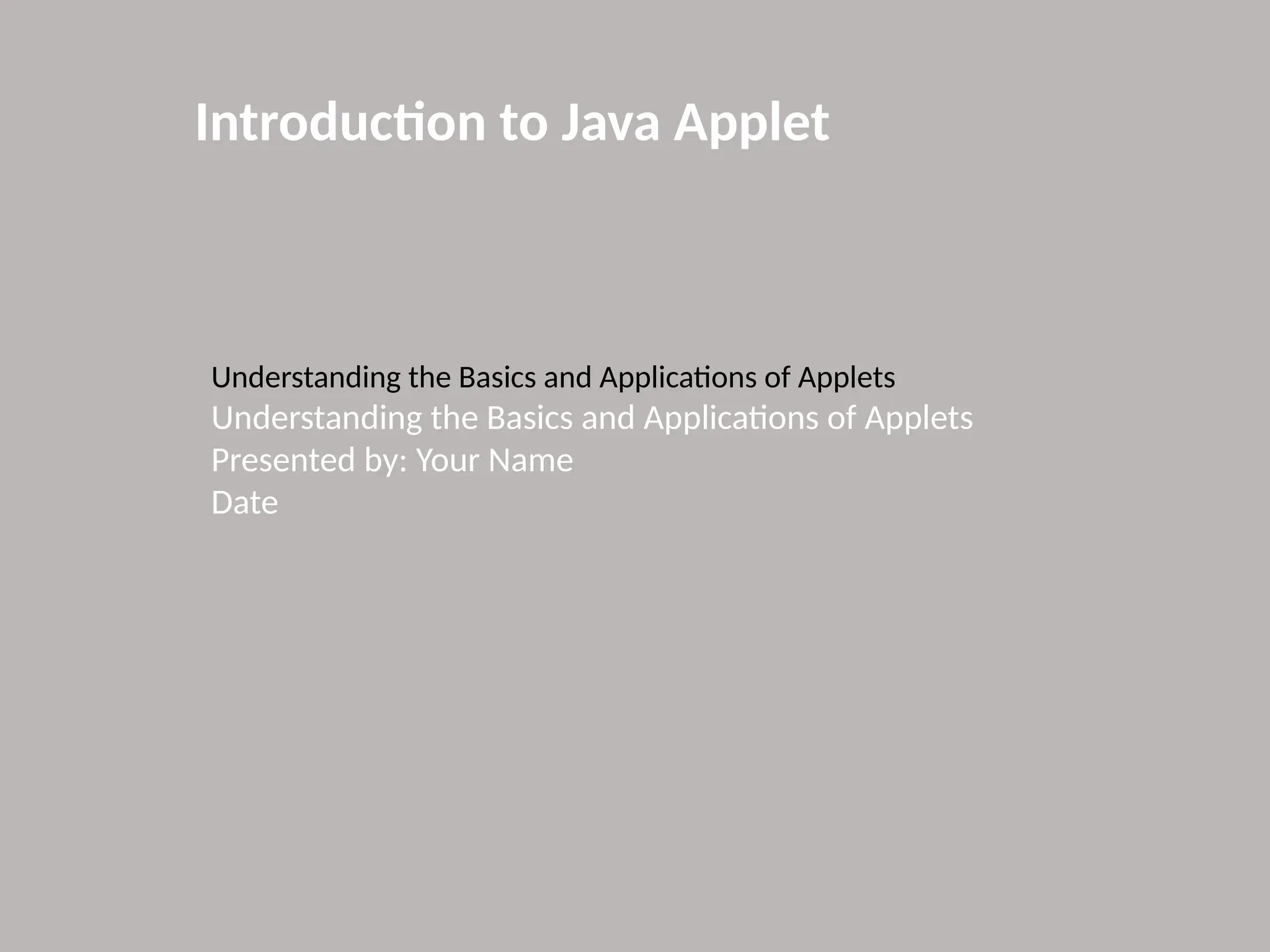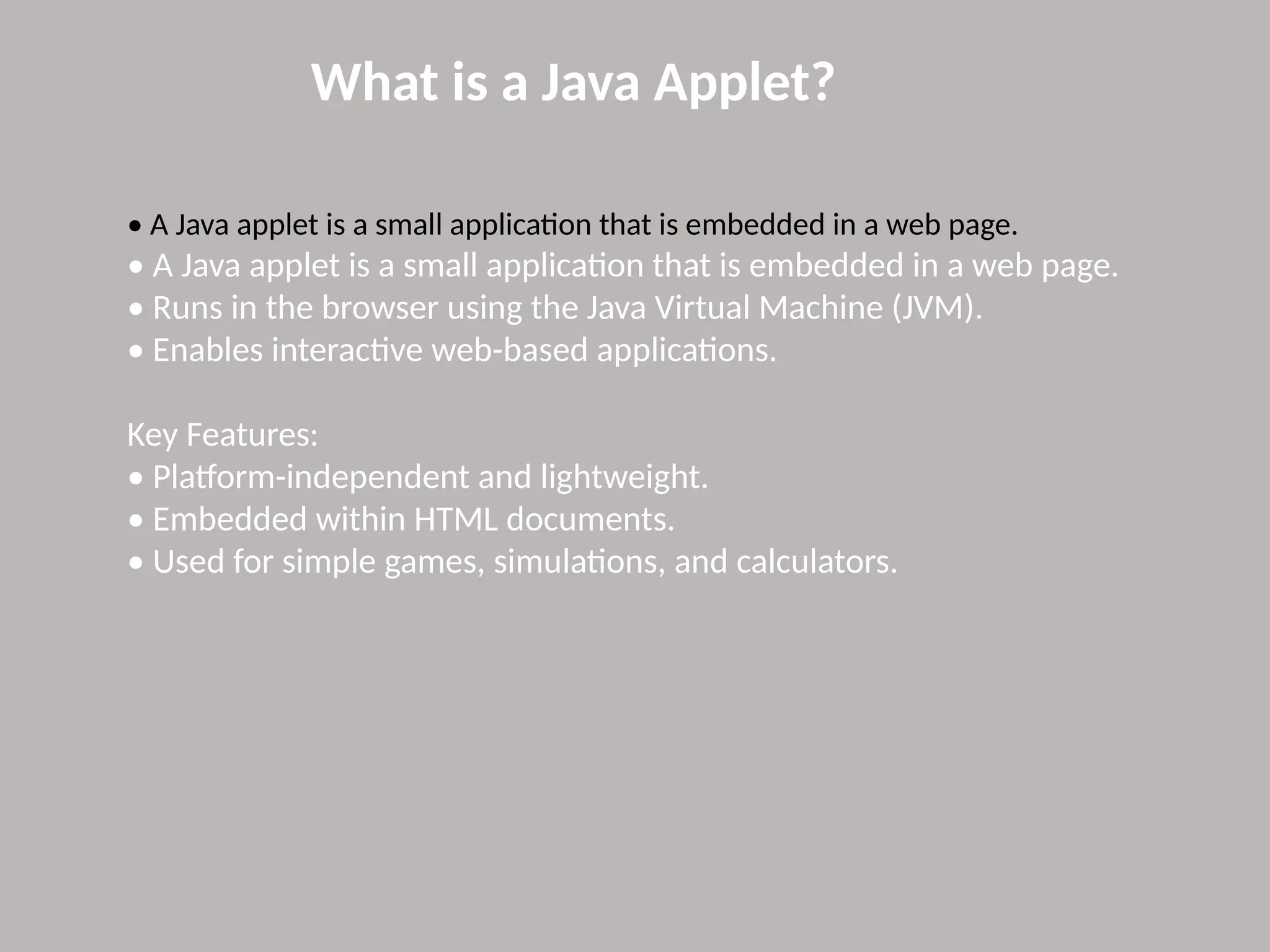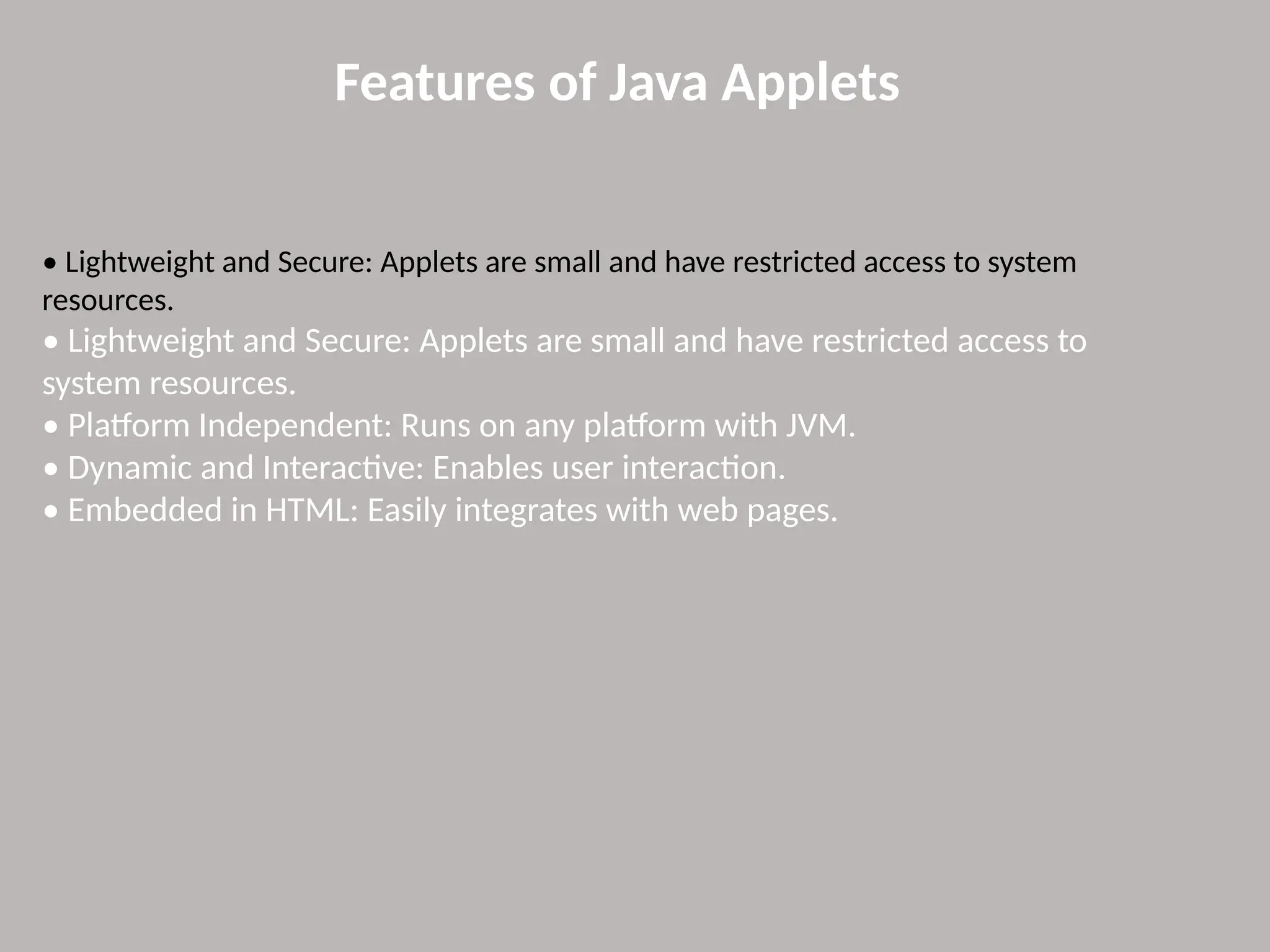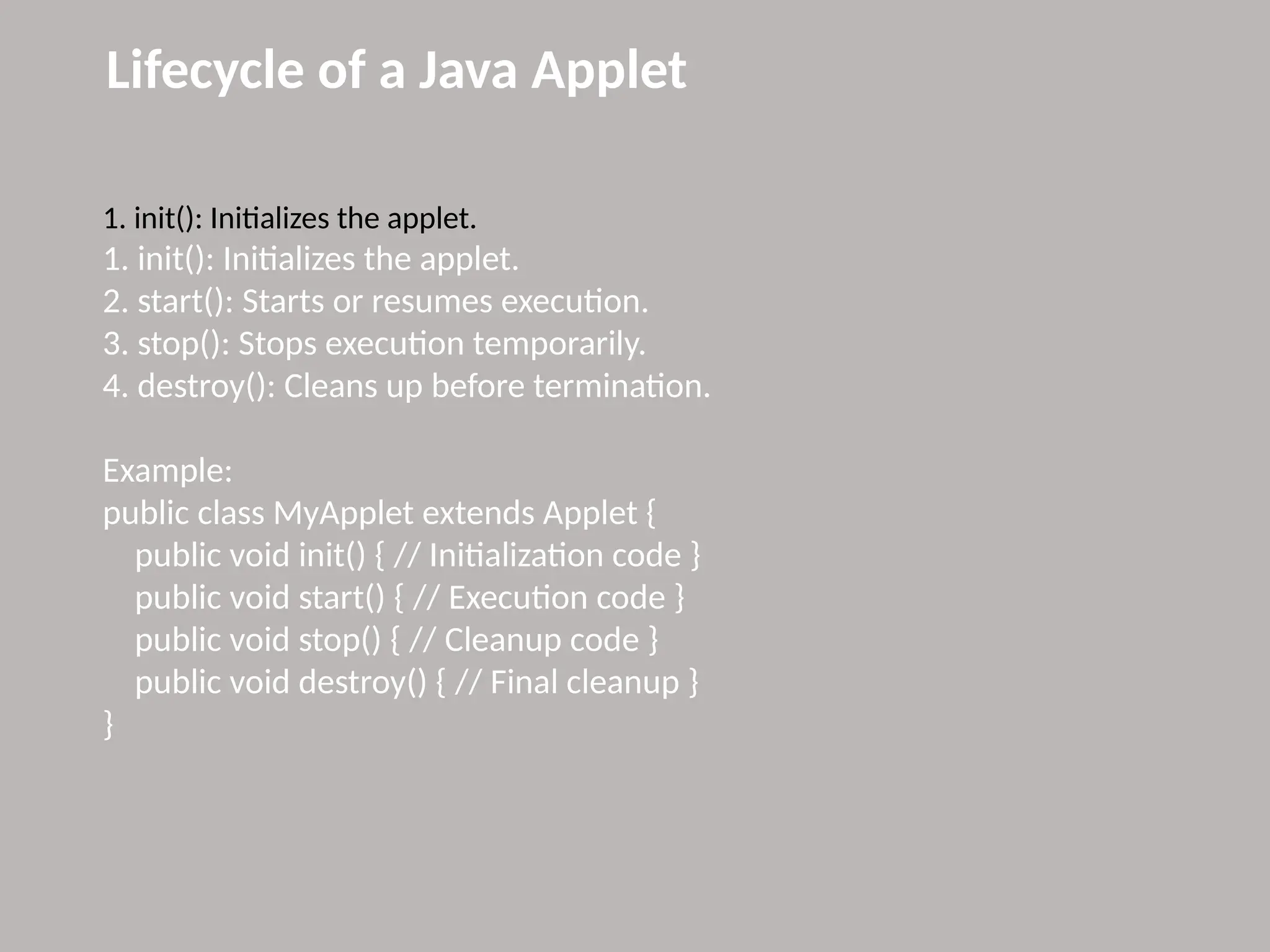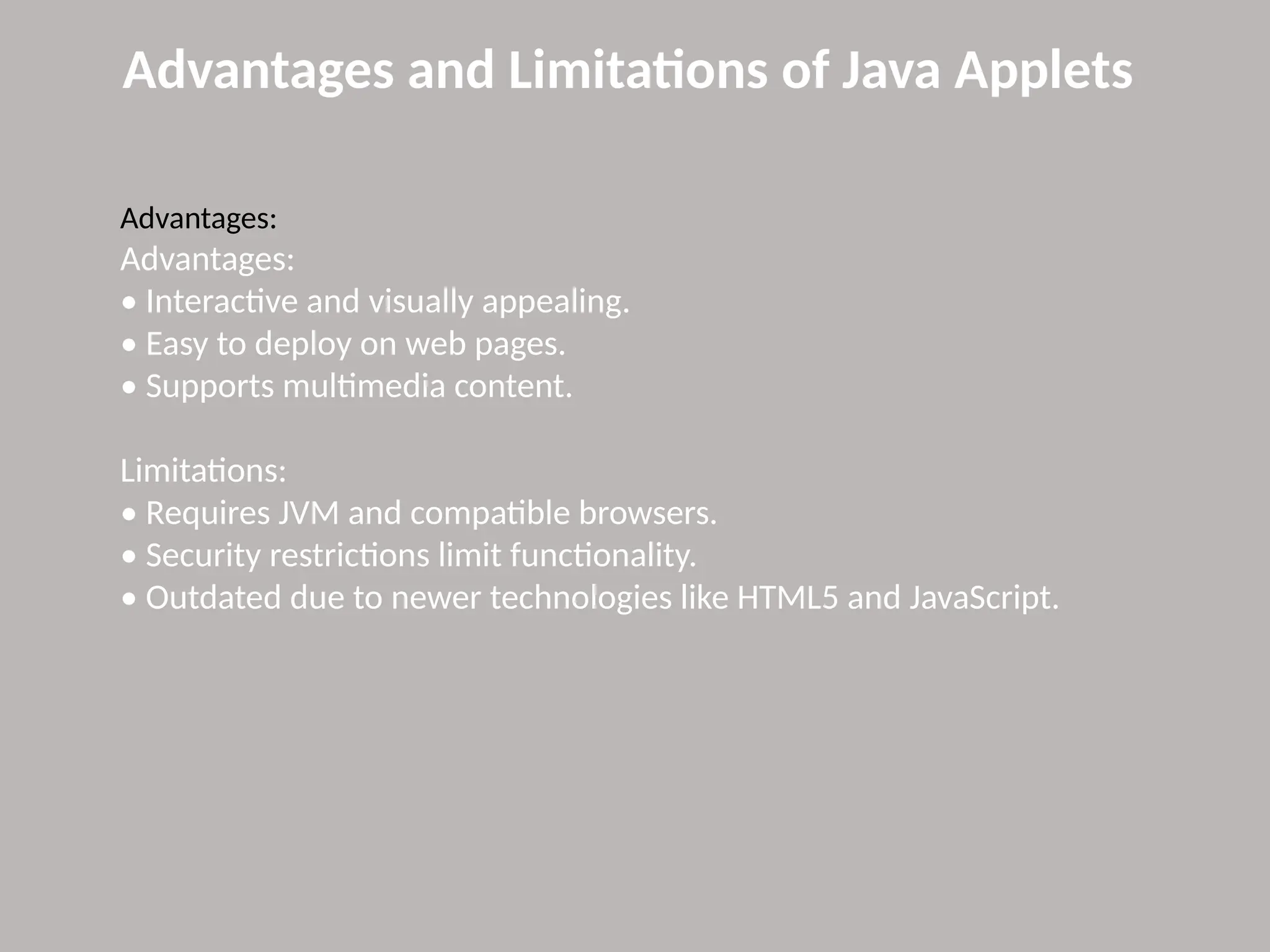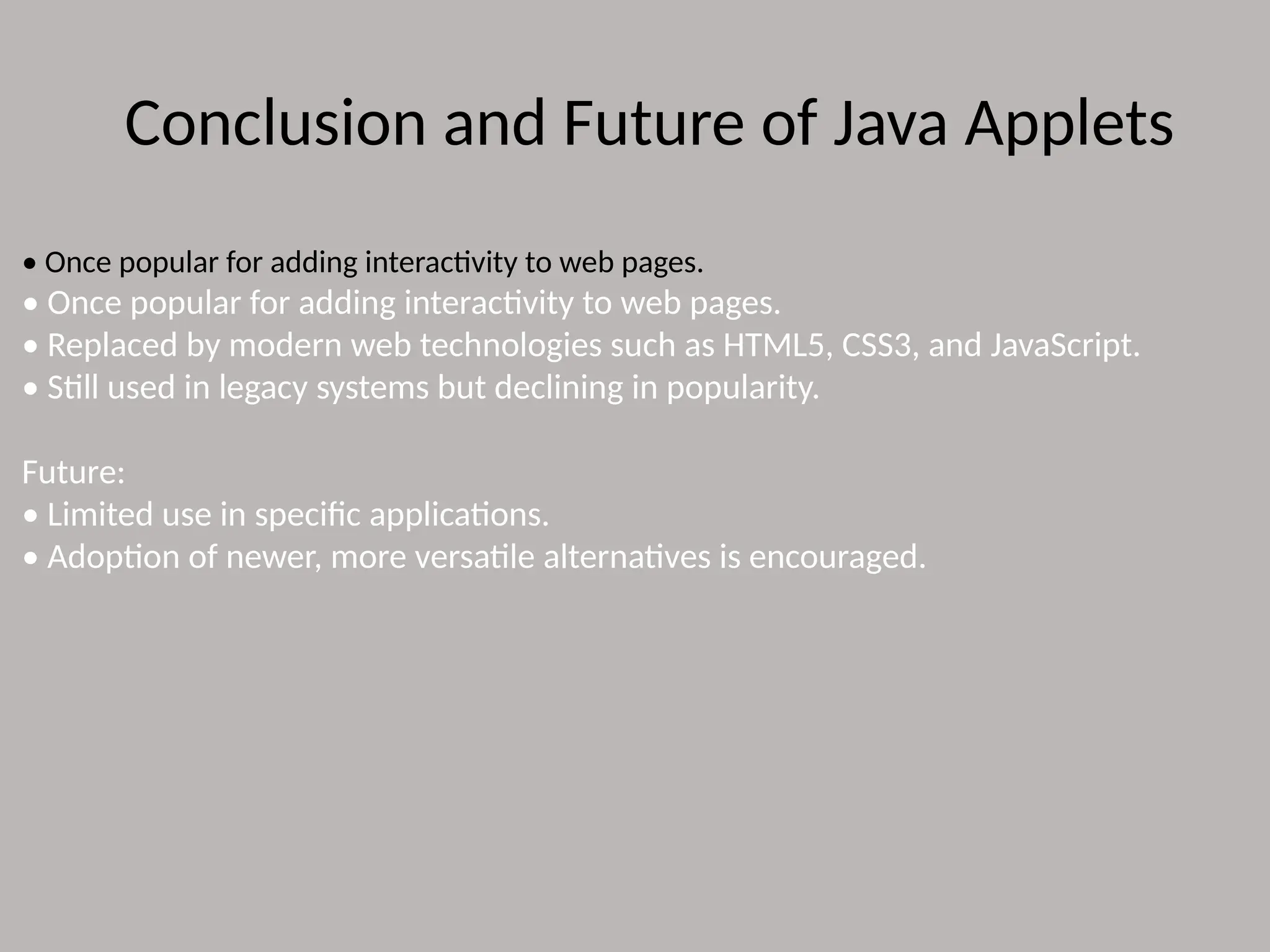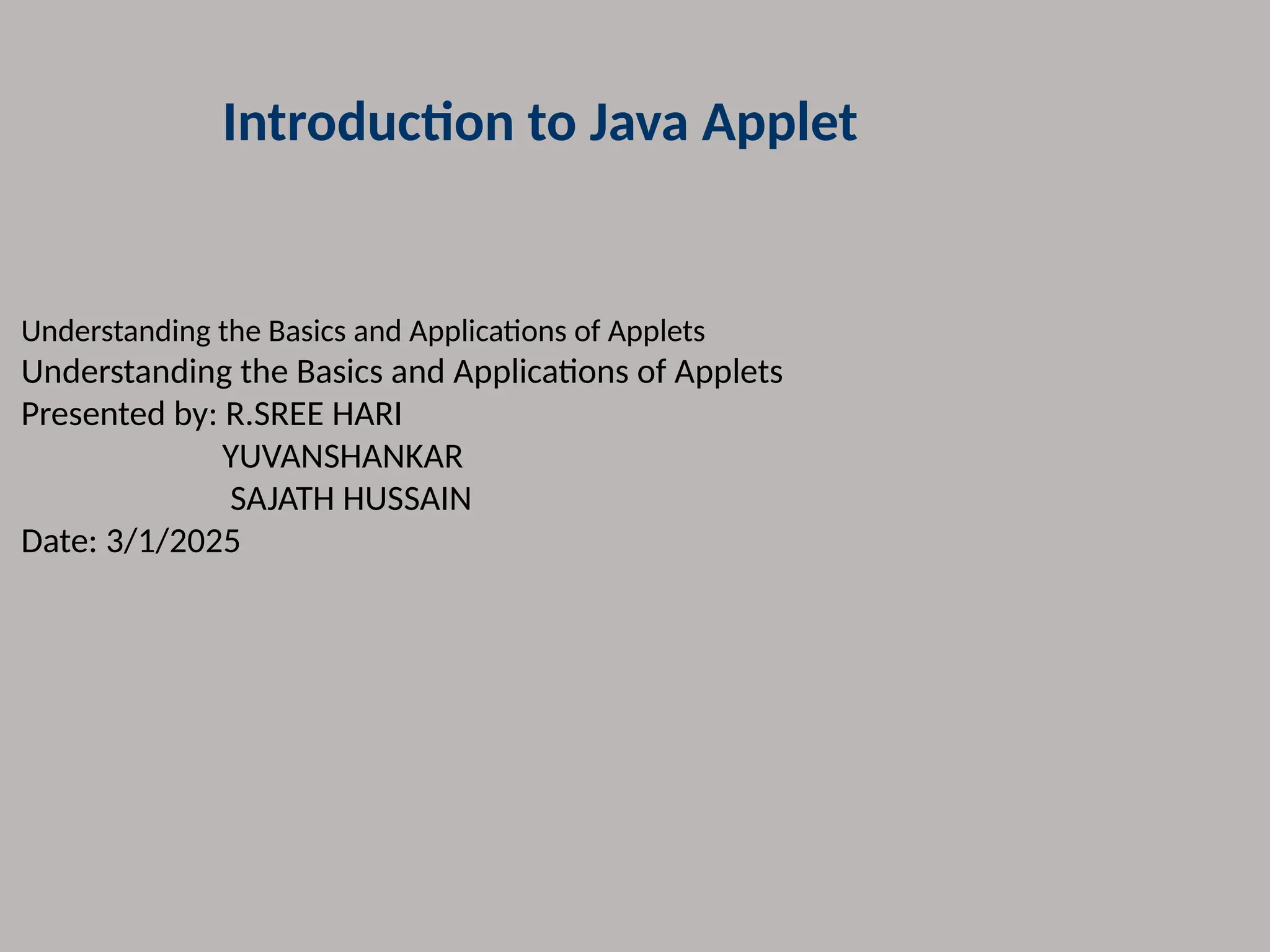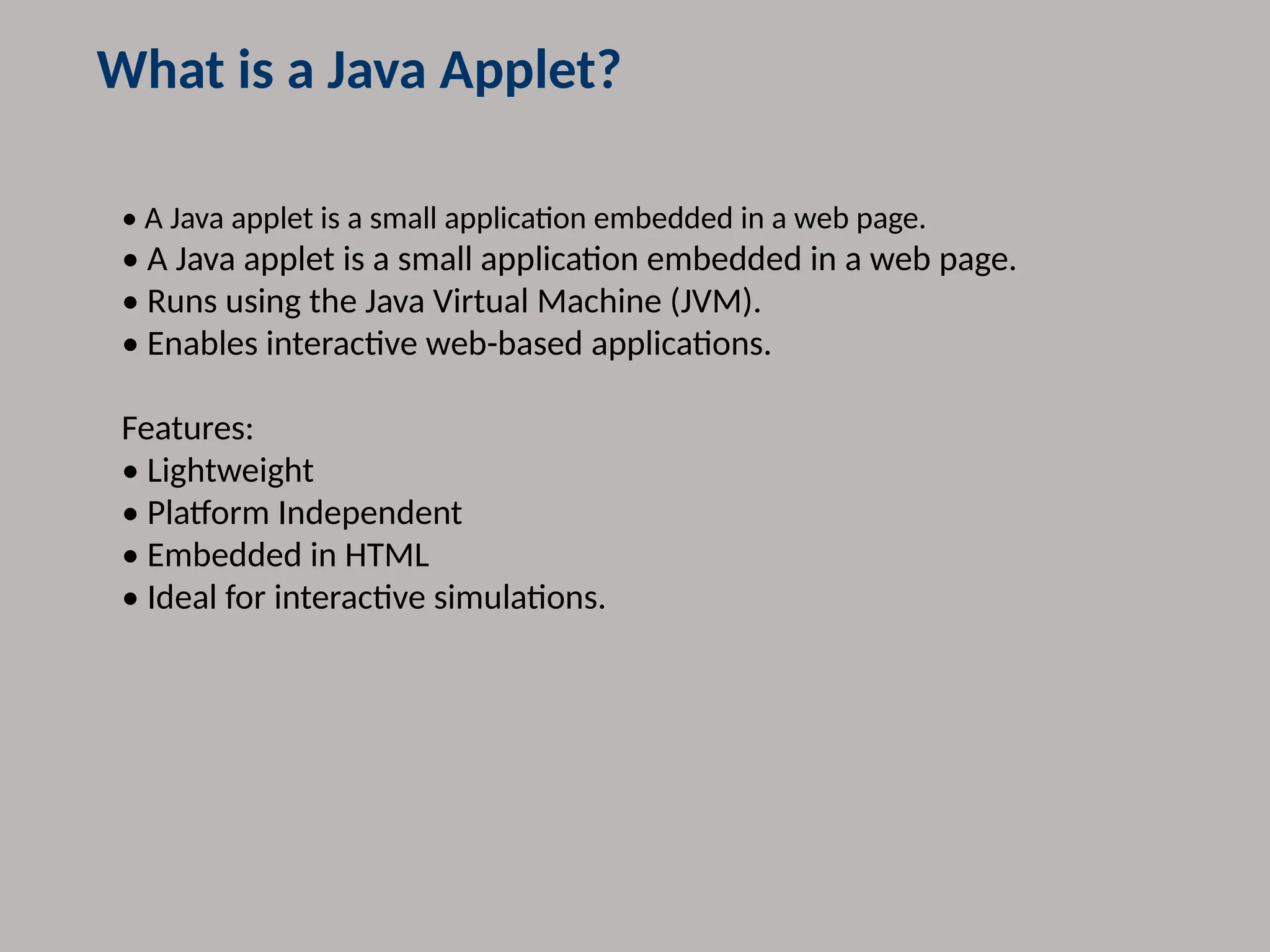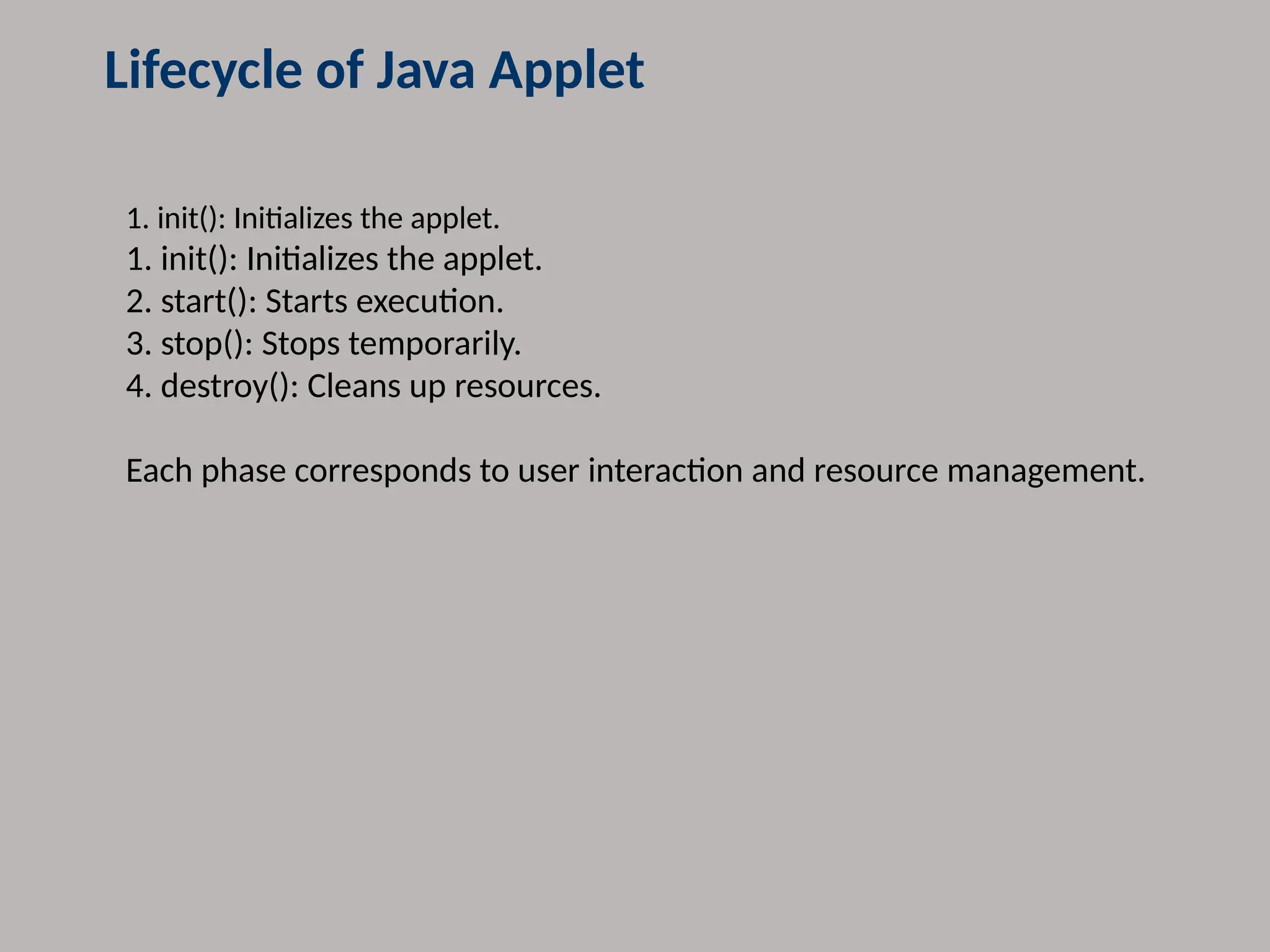Java applets are small applications embedded in web pages that run on the Java Virtual Machine (JVM), enabling interactive web-based applications. They are platform-independent, lightweight, and used for various purposes like games and simulations, though they face limitations due to security restrictions and declining popularity in favor of modern technologies like HTML5 and JavaScript. The lifecycle of an applet includes initialization, execution, temporary halting, and cleanup phases, corresponding to user interactions and resource management.
